The original story ran for 22 weeks in the newspapers, which would require 44 pages for a complete printing (3 daily strips per page), so there must have been a lot of editing in these early editions. It was only in the reconstructed versions that appeared in the 1000th Frew issue (#972) and the large-format printing in #1147 (6 panels per page rather than 12), that the original story was presented in it's entirety. Comparison of the #1147 edition with the #8 replica reveals that the first 5 weeks of the story was skipped, as were the last 5 weeks. The continuity covering Sala's escape from hospital, a demonstration of the Sky Band's activities, The Phantom's capture by Captain Horton, and his escape with the help of the Bandar, was all conveniently overlooked. The story then began with week 6, although a further 23 panels from the middle 12 weeks of continuity were removed. At the end of the story, the clever interplay between The Phantom and the Baroness, the amazing air battle, and the Baroness' suicide were not printed. In total, only half of the original story was printed in all Frew versions prior to #972.
The absence of the original 5 week finale called for a completely new ending for the story, made possible by some judicious selection of panels from the first 5 weeks, and some deft re-lettering that reasonably matched the style of the original. The last 6 panels from the #8 replica are reproduced below with the original panels adjacent -- panel 10 was unchanged but in the original strip it followed immediately after panel 6 where Sala looks down on Heron Island from the bomber (panel 3 on 6 Mar 1937). Not only were these "new" panels re-lettered, but there was also some re-inking, notably of the Baroness in panel 8 below, and also the attacking formation of planes in the background of 4 panels. The maintenance of continuity even required a change in lighting from night to day!
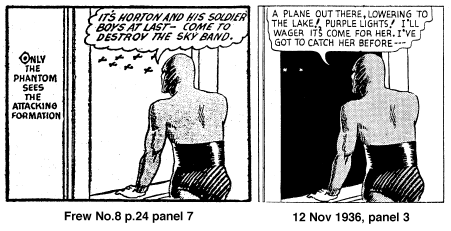
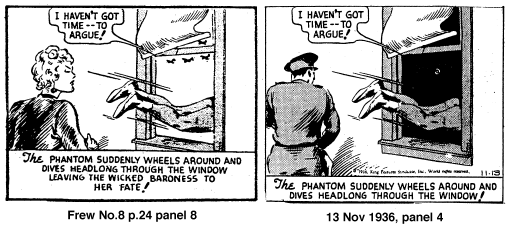
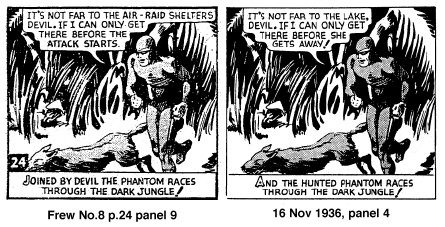
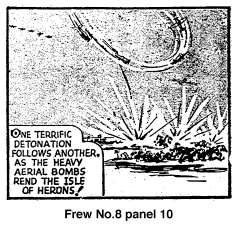
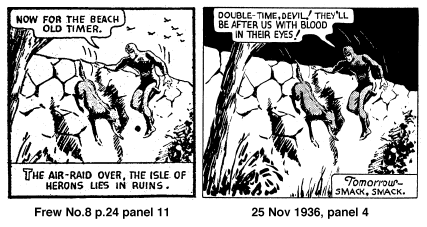
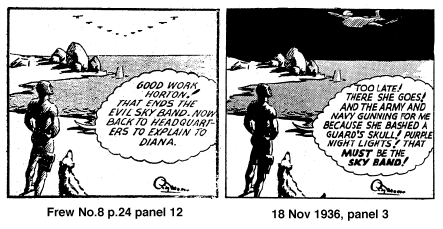
Quite an incredible bit of work, and it leaves one wondering why Frew didn't save themselves so much effort by simply spreading the story over two issues! Perhaps the publishers felt their readership where not ready for such innovations? However, it does seem that the extra workload of creating new story endings DID prove too much, since the next "long" story, The Seahorse (27 weeks), was the first to be published in two parts (#10 and #11). Unfortunately I cannot comment on the impact this had on their "completeness" since I don't have those issues in my collection.
So it seems that for many years the vast majority of Australian Phantom readers were ill-informed of the ending of The Sky Band. A lucky few may have had access to the more complete Woman's Mirror Annual, or maybe the 1982 printing by Ken Pierce Books. However, both of these were still edited in some way, and it was only through Jim Shepherd's commendable policy of producing complete unedited reprints, that we have been able to learn the whole story! Kudos Jim!
 © 1999 KING FEATURES SYNDICATE, INC. THE HEARST CORPORATION
© 1999 KING FEATURES SYNDICATE, INC. THE HEARST CORPORATION